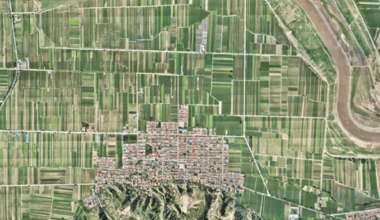No products in the cart.
In recent years, the soaring capabilities of drones have transcended their initial applications, permeating various industries with unprecedented versatility. Once primarily associated with aerial photography and recreational pursuits, drones have evolved into multifunctional tools capable of revolutionizing sectors such as agriculture, construction, and environmental monitoring.
We witness drone proliferation across industries, and it becomes evident that drones have become indispensable assets, driving innovation and efficiency in ways previously unimaginable. Overcoming traditional constraints and speeding up the transportation of medical supplies in the healthcare sector, enhanced safety protocols and minimizing downtime in infrastructure inspection, real-time data on crop health in the agriculture sector are just some of the benefits drones has offered.
As these unmanned aerial vehicles continue to prove their mettle in diverse fields, the synergy between technological advancements and practical applications underscores the transformative impact of drones on our modern landscape, shaping a future where efficiency and innovation soar to new heights. Continuously evolving, the capabilities of drones are forging a path towards a safer and more secure future, where cutting-edge technology becomes an integral ally in ensuring public safety.

Advancing Safety in Law Enforcement Operation
In the pursuit of enhanced safety and operational efficiency, law enforcement agencies are spearheading the integration of unmanned aerial vehicles, revolutionizing incident response, rapid mapping, and scouting strategies while prioritizing the well-being of officers and bystanders.
- Tactical Situation Awareness
Leveraging drones provides law enforcement with an invaluable tool for real-time Tactical Situation Awareness, enabling precise and dynamic insights crucial for effective decision-making in the field. The DJI Matrice 300 RTK, with its advanced flight capabilities, multiple payload options, and sophisticated sensors, is a versatile option for specific situation needs. Additionally, its adaptability makes it an exceptional choice for environmental monitoring and disaster response, allowing for the efficient assessment of environmental hazards and risks during critical situations.
- Accident Reconstruction and Forensic Analysis
Drones with Intelligent flight modes and RTK Technology such as DJI Matrice Series are useful for precision mapping, which can provide highly accurate geospatial data for detailed scene reconstruction, enhancing the overall efficiency of the investigative process.

- Real-time Surveillance
Drones equipped with live video transmission capabilities ensures uninterrupted high quality footage and maintains eye of the surrounding. The DJI Matrice 350 RTK with O3 Enterprise Transmission guarantees transmission stability, can also support three payloads simultaneously to meet the requirements for different operations.
- Immediate Deployment for Rescue Operations
Drones, serving as first responders, swiftly navigate emergency situations, providing real-time data, and aiding in rapid decision-making for more effective and efficient emergency response efforts. Compact drones like DJI Mavic 2 Thermal, equipped with Wide + Zoom + Thermal Cameras, offer an ideal solution for quick deployment, proving invaluable in various scenarios, particularly excelling in night missions where their thermal capabilities enhance visibility, ensuring efficient and reliable performance during critical operations.

Crime Prevention Reinvented
Leveraging advanced drone technologies, Crime Prevention and Deterrence are significantly enhanced through the visible presence of aerial patrols, targeted monitoring of high-crime areas, and proactive measures driven by predictive analytics and data-driven insights.
A. Visible Presence and Deterrent Effect of Drones
The impactful role of drones in crime prevention extends beyond their visible presence, functioning as a robust deterrent against criminal activities. The inherent influence of aerial surveillance is harnessed through advanced features integrated into these unmanned aerial vehicles. Equipped with state-of-the-art technology, including high-resolution cameras, powerful LED lights, and audible warnings, drones establish a conspicuous and omnipresent watchful eye over public spaces. The amalgamation of these features not only enhances their visibility but also ensures a proactive and vigilant surveillance approach.
B. Monitoring High-Crime Areas to Prevent Criminal Activities
Drones, equipped with advanced imaging technology such as thermal cameras and zoom capabilities, prove invaluable in monitoring high-crime areas with precision. The ability to conduct aerial surveillance allows law enforcement to cover expansive territories efficiently. Drones can quickly and discreetly navigate challenging landscapes, providing real-time data to law enforcement personnel. By strategically deploying drones to high-crime zones, law enforcement agencies can gather crucial intelligence, assess potential threats, and respond promptly to emerging situations. The versatility of drone features, including automated flight paths and geofencing, ensures focused and targeted monitoring, aiding in the prevention of criminal activities and contributing to the overall safety and security of communities.
C. Predictive Analytics and Data-Driven Insights
Drones equipped with advanced sensors and cameras contribute to proactive crime prevention by generating a wealth of data that can be analyzed for predictive insights. The integration of predictive analytics allows law enforcement to identify patterns and trends in criminal behavior. Features such as automated data collection, machine learning algorithms, and real-time data transmission enable drones to provide law enforcement with actionable insights. By leveraging this technology, law enforcement can implement proactive measures such as targeted patrols, resource allocation, and community engagement initiatives based on data-driven assessments. Drones become integral components of a forward-thinking strategy, allowing law enforcement agencies to stay ahead of emerging threats and prevent criminal activities through informed decision-making.

Safeguarding Tomorrow with Drone Innovation
In conclusion, the integration of drone technology in law enforcement and public safety underlines a transformative paradigm, where the visible presence and surveillance capabilities of drones bolster crime prevention and deterrence strategies. The versatile applications of drones, from tactical situational awareness to rapid response in search and rescue operations, exemplify their pivotal role in fostering a safer, more secure future. As law enforcement agencies harness the power of drones to navigate complex environments, monitor high-crime areas, and employ proactive measures driven by predictive analytics, a new era of efficiency and precision in public safety emerges. The ongoing evolution of drone capabilities continues to shape the landscape of law enforcement, offering innovative solutions that empower agencies to navigate dynamic challenges and safeguard communities with unparalleled effectiveness. In this era of technological advancement, drones stand as not only tools of surveillance and intervention but as transformative partners in the ongoing pursuit of public safety excellence.



